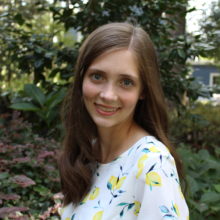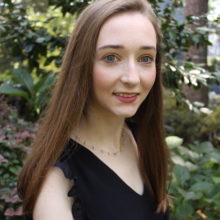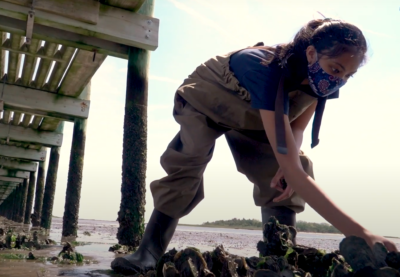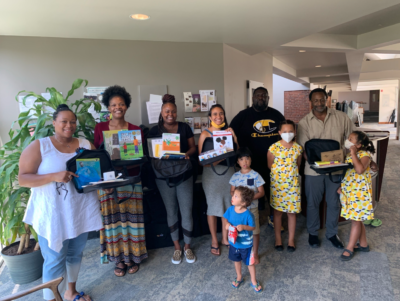We began competing in science fairs in the second grade and found that we loved the whole process — from asking interesting questions, to researching and finding answers, and then sharing our knowledge with the judges. As sisters, we used to compete against each other, but in middle school joined forces to create an amazing research team. We have partnered up for projects ever since.
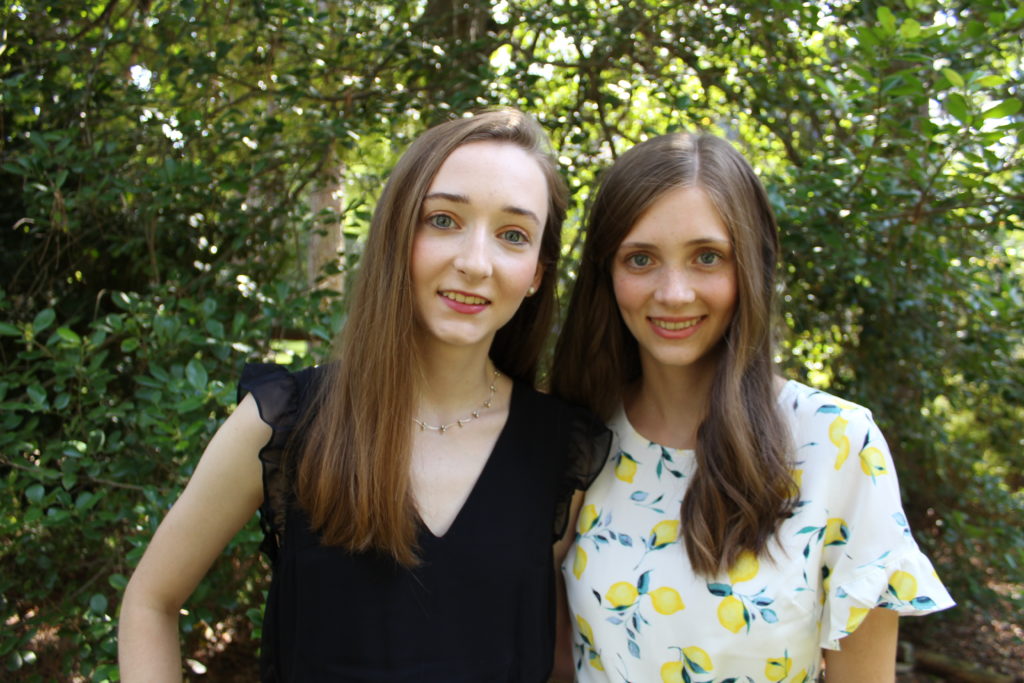
In 2021 the North Carolina Science and Engineering Fair (NCSEF) went virtual. This didn’t deter us, as we had participated in the past. We saw traditional plastic cutlery as one of the most dangerous types of debris for seabirds and marine life, so we focused on designing hard bioplastics to make disposable cutlery. Thus we designed cutlery out of bioplastic materials to rapidly degrade once thrown away.
How did we measure success? We tested our samples in landfill, saltwater, and freshwater environments, and all materials completely degraded within thirty days. We won first place in the engineering category at the NCSEF. This qualified us to advance to the Regeneron International Science and Engineering Fair (ISEF). After presenting our research at ISEF, we received three special awards.
What do science fairs mean to each of us?
Hello, I’m Kaitlyn Zuravel, a senior at Terry Sanford High School in Fayetteville, and I plan to study chemical engineering next year in college. Participating in science fairs sparked my curiosity in science and helped develop my love of STEM (science, technology, engineering, and math).
Each year I had the opportunity to explore a different field of STEM, which helped me decide that I want to become a chemical engineer one day. I hope my research helps find sustainable solutions to some of our world’s most complex problems – like plastic pollution.
Looking back, I see that presenting numerous research projects over the years has opened many doors in my life. It has allowed me to travel and present my research at the national level. One of my fondest memories was presenting my research at the U.S. National Security Agency.
After developing strong presentation skills, I now use my voice to give back. I want to help decrease the gender gap in STEM fields. I earned my Girl Scout Gold Award by creating and leading several STEM programs for my local library. The purpose of these programs is to recruit young girls (grades 1-3) for future STEM careers.
I have found that instilling a love of STEM and thinking about exciting STEM careers at an early age is key to motivating girls to succeed in science and math in middle school, high school, college, and beyond. Also, when girls are already doing STEM activities in grades 1-3, they will not be intimidated and think that STEM clubs are only for boys when they get to middle and high school. By reducing the gender gap in STEM, we will maximize the future of STEM.
Hello, my name is Lauren Zuravel and I am a high school sophomore. Ask anyone, and you will know that growing up, I was not particularly interested in STEM like my sister. My favorite subjects were English and history, but not science or math. However, my sister made her science fair projects look so exciting that I wanted to get involved.
“I realized early on that creativity and public speaking are also used in STEM!”
– Lauren Zuravel
You need imagination when writing a story, but you can also use it in a science fair project. In fact, judges will tell you that they are looking for creativity.
I once used pennies to visualize how genetic traits are passed down through generations. My sister and I used our ingenuity to build some of our equipment. Having no access to expensive strength testing devices, we decided to make our own using scrap pieces of wood, a milk jug, sand, and a mousetrap. I am thankful that I learned to express my creativity in STEM because now I can solve problems from a unique perspective.
More importantly, I realized that STEM skills are invaluable. They certainly extend beyond science and math class — they are important in all aspects of life.
Competing in science fairs has helped us realize that a successful research project does not necessarily require access to expensive high-tech lab equipment. The key is choosing a question or problem that you are passionate about and then finding a creative solution.
By using your strengths and improving your weaknesses, you can tackle even the greatest challenges. Please join us to help inspire more young girls to get involved in STEM competitions like science fairs. Girls are creative and smart! Who knows, the young girls in your life might discover a breakthrough that will change the world.

